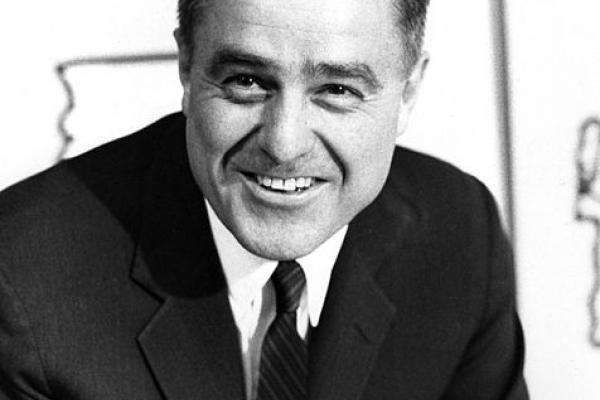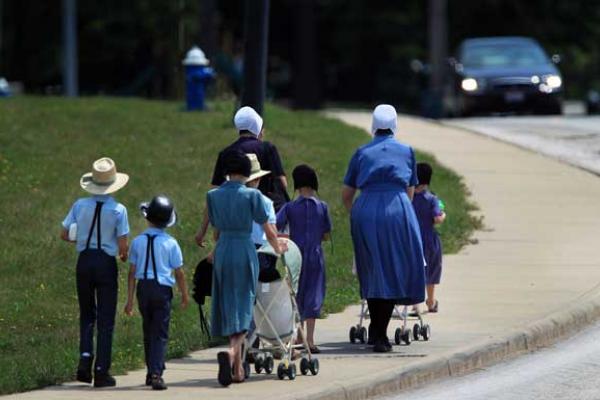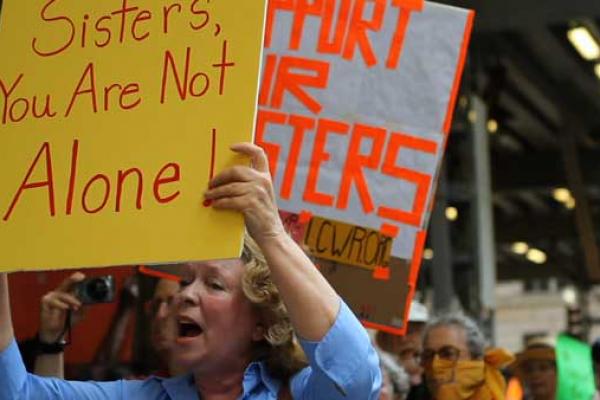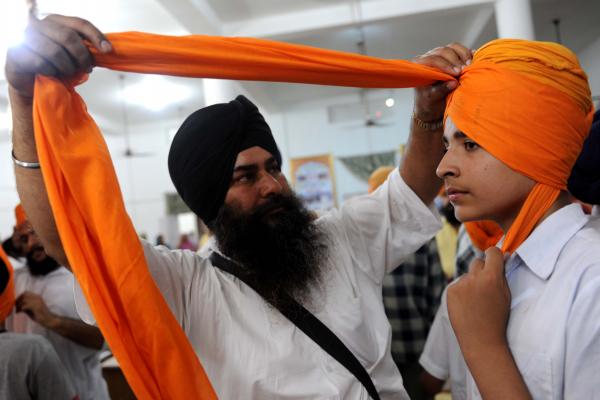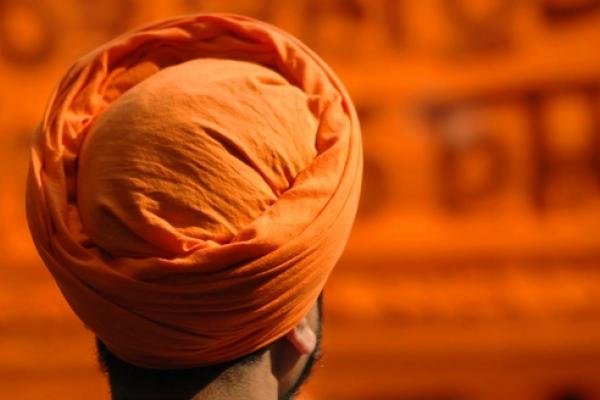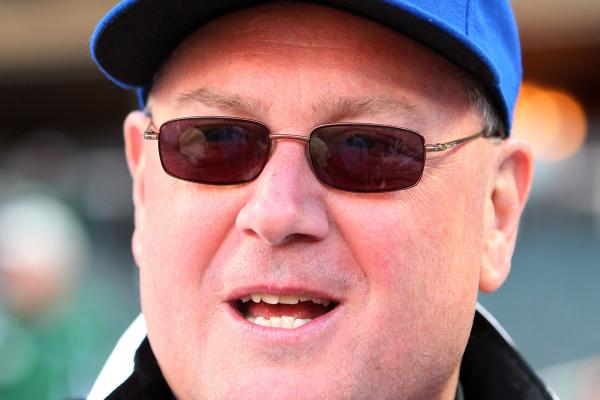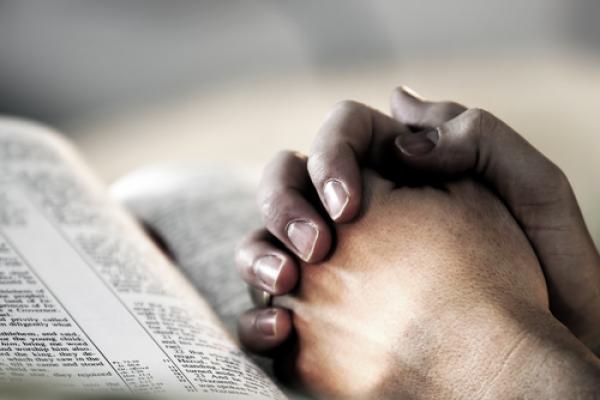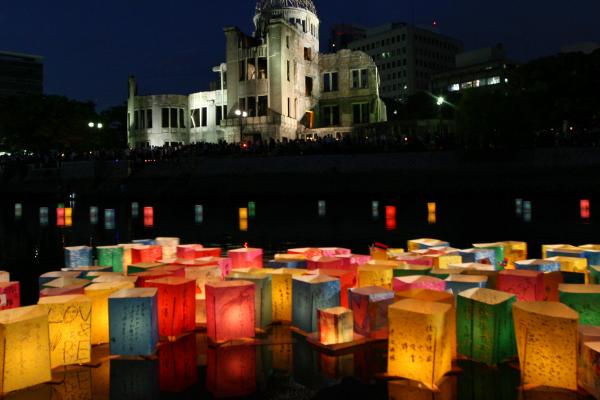In June my husband, who gets lots of review copies unbidden, asked me if I wanted to read Mark Shriver's memoir about his father, Sargent Shriver, who passed away in 2011 at age 95.
"Since you're a fan of all things Kennedy," he said, "I thought you might want to see it."
I didn't.
True, a high point in my adolescent life was standing in back of St. Matthew's Cathedral one December morning in 1963 waiting for mass to begin when suddenly a very tall, very disheveled, very pregnant Eunice Kennedy Shriver pushed past me, wearing smudged red lipstick and a full-length fur coat. But sons are not necessarily good biographers, and anyway, I had a stack of mysteries awaiting my attention.
But then in July, a Facebook friend pointed me to Reeve Lindbergh's review of A Good Man in the Washington Post, suggesting that this was a book I might want to read. Lindbergh — herself the daughter of two famous parents, Charles and Anne Morrow Lindbergh — called it "a moving and thoughtful book." Maybe I'll read this after all, I said to myself. And then a week or two later, my friend Estelle sent me a copy of the book as an early birthday present, telling me she thought I'd connect with it on many levels.
I must be supposed to read this one, I thought.
The Amish are one of the fastest-growing religious groups in North America, according to a new census by researchers at Ohio State University.
The study, released July 27 at the annual meeting of the Rural Sociological Society, suggests a new community sprouting every three and a half weeks.
Nearly 250,000 Amish live in the U.S. and Canada, and the population is expected to exceed 1 million around 2050.
The growth may not be visible outside Amish country, but the rural settlements definitely see the boom.
Fifty years after Pope John XXIII convened the Second Vatican Council to modernize the Roman Catholic Church, the legacy of that watershed summit that revolutionized Catholic life is at the core of a dispute between the Vatican and American nuns.
In April, the Vatican accused the Leadership Conference of Women Religious (LCWR), the umbrella group that represents the majority of American nuns, of “doctrinal confusion.” As LCWR leaders meet this week (Aug. 7-11) to plot their response to the Vatican, many of the sisters say they are just following the spirit of Vatican II.
“This is not just about the Vatican versus the nuns. This really is about the future of how we interpret the message of the Second Vatican Council,” Sister Maureen Fiedler told the PBS program “Religion & Ethics NewsWeekly.”
Law enforcement authorities don't know why suspected gunman Wade Michael Page burst into a Sikh temple in Oak Creek, Wis., on Sunday and opened fire, killing six before he was shot dead by the police.
But many American Sikhs say they do know this: Their community has been targeted by a growing number of hate crimes since the 9/11 terrorist attacks. The New York-based Sikh Coalition reports more than 700 such incidents since 2001. The question is: Why?
"The turban is the main issue here," said Pashaura Singh, a professor of Sikh and Punjabi studies at the University of California-Riverside. "People confuse Sikhs with Osama bin Laden."
Following 9/11, bin Laden and his al-Qaida associates were often shown in media reports wearing white turbans. Combine that with a lack of basic knowledge about the estimated 500,000 Sikhs living in the U.S. and you get tragic — and sometimes violent — cases of mistaken identity.
Ralph Singh, director of publications and public relations for Gobind Sadan — "God's House Without Walls," a spiritual community rooted in the Sikh tradition with locations in India and the United States — responds to the mass shooting at a Wisconsin Sikh gurudwara that has devastated the faith community.
Sikhism was founded more than 500 years ago in India. Observant Sikhs do not cut their hair, and male followers of the religion wear turbans, which they consider sacred.
"A Sikh, wherever they go in the world, is committed to building community a community of peace, an inclusive community to stand as an affirmation of what we now call pluralism," Singh says.
Listen to what Singh as to say on a video inside the blog ...
By tradition, the storied Al Smith Dinner has provided a few hours of comic relief from the angry volleys of the campaign trail – a white-tie charity banquet held in the weeks before Election Day, hosted by the archbishop of New York and featuring speeches by the two presidential candidates on the condition that they lob nothing more than good-natured jibes.
But the Catholic hierarchy’s fierce feud with President Obama, abetted by the increasingly sharp tone of the 2012 elections, is threatening to invade this demilitarized zone and give New York Cardinal Timothy Dolan a case of pre-dinner agita.
Dolan has reportedly extended an offer to Obama (as well as his Republican opponent, Mitt Romney) to attend this year’s dinner at the Waldorf-Astoria, scheduled for Oct. 18, and the president has accepted. That has mobilized abortion opponents, who view Obama as the worst thing since Roe v. Wade and an enemy of religious liberty because of his administration's controversial birth control mandate.
The Rev. Frank Pavone, head of Priests for Life, a leading abortion opponent based in Staten Island, said on Aug. 6 that “the polite putting aside of differences for a while amounts to scandal.”
The Long War Journal, citing AFP, reports that the first known U.S. drone strike in Yemen in more than a month took place Saturday:
“The U.S. killed five al Qaeda in the Arabian Peninsula fighters in a drone airstrike in eastern Yemen. The strike is the first in Yemen in more than a month.
The unmanned Predators or Reapers fired a pair of missiles at a vehicle in Al Qotn in Hadramout province earlier today, AFP reported. Five AQAP fighters were killed in the strike.
No senior AQAP leaders or operatives are reported to have been killed in the strike. The identities of those killed have not been disclosed.”
The evening was warm. Seated at the small desk by the windows I opened my Bible and started to read from Jeremiah, "Seek the welfare of the city to which I send you." The passage was also inscribed over the entrance to the cloisters of Richmond Hill, the old convent turned retreat center in the Church Hill neighborhood of Richmond, Va., overlooking downtown. I was on retreat and seeking a little inspiration.
Seek the welfare of the city, said Jeremiah. Pray for the city, say the people of Richmond Hill. Love the city. Work for the good of the city. This is the city of God. Every city is the Holy City.
The verse from Jeremiah actually continues on. It's a bit more involved than the brief passage inscribed over the entryway:
"But seek the welfare of the city
to which I have sent you into Exile,
and pray to the Lord on its behalf,
for in its welfare you will find your welfare." (Jer. 29:7)
Oh no ... I'm gonna have to work this out.
Sixty-seven years ago today, at 8:15 on the morning of August 6, 1945, it was a sunny morning in Hiroshima, Japan, a city of more than 300,000 people. Some were on their way to work, children were playing in the streets. Suddenly the sky exploded in a brilliant and hellish flash of light as a 15 kiloton nuclear bomb was dropped from a U.S. plane in the sky overhead. More than 70,000 people were instantly killed, some with their bodies etched into the pavement like eerie shadows. By the end of the year, as many as 140,000 had died, after five years, the toll was estimated as high as 200,000. Three days after Hiroshima, on August 9, 1945, a second nuclear bomb was used against Nagasaki, Japan. An estimated 75,000 people were killed in that explosion.
Today, according to the Associated Press, the annual ceremonies held in Hiroshima’s peace park to commemorate the bombing were attended by 50,000 people, including representatives from 70 countries. Two Americans with family ties to the bombings also attended.
My biracial niece, Hannah, and I were talking about Martin Luther King, Jr., and what she had learned about him in school. She was only in second grade then. She was piled in the back seat of the minivan, along with my kids Caitlin and Cameron, and their cousin Austin. We were on our annual spring break escapade to the Travis County fair, Children’s museum, San Antonio Zoo, and every place in between. I asked her about what Martin Luther King did. ...
Hannah and myriad others like them in the Millennial generation, embody Dr. King’s original vision. The very seed of the dream has germinated. They carry it in their DNA, literally. In fact, they are the living, breathing incarnation of interracial harmony. Come to think of it, no one wants to choke on a seed. We prefer the fruit. In the same way, we expect words to go beyond pie-in-the-sky imagination. We want them to be fleshed out into reality.
